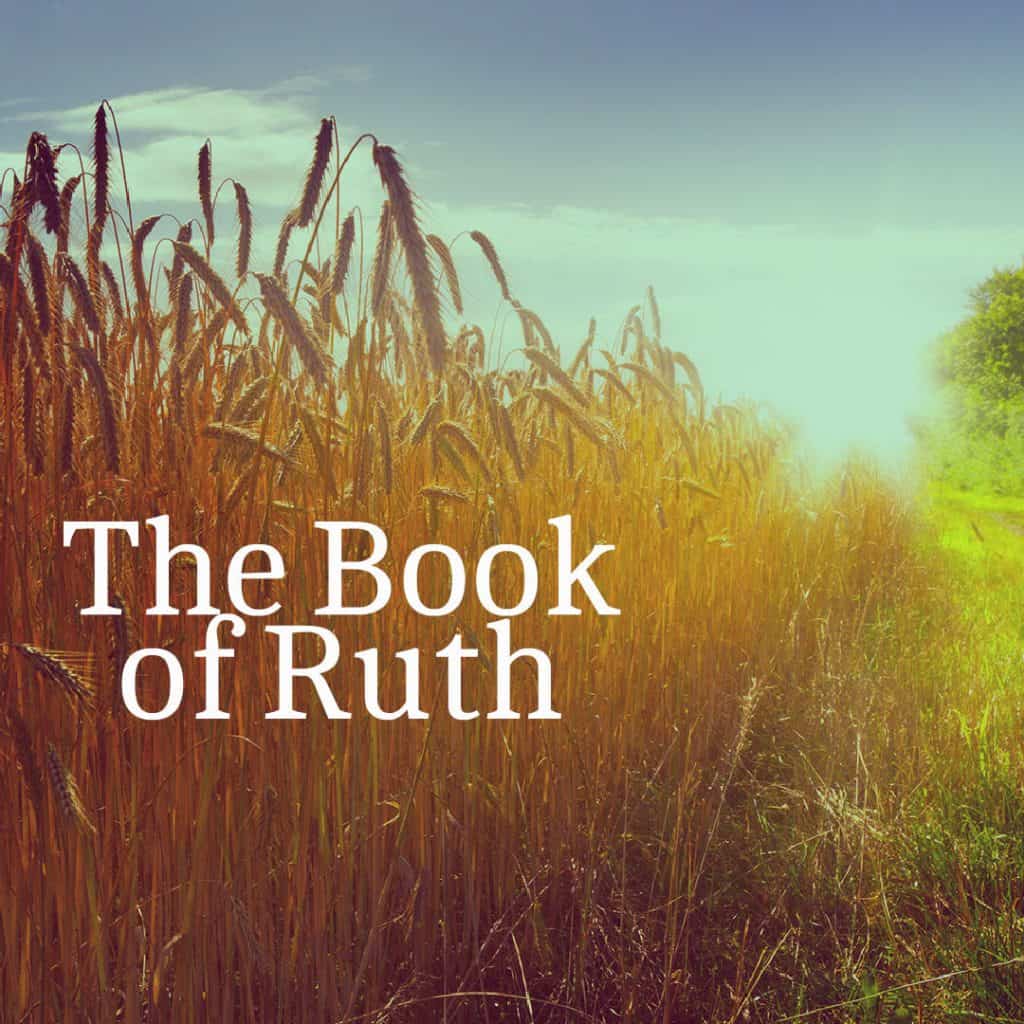⏱️ Estimated Reading Time: 9 min read
In this post, we will work our way through Ruth 3:1-5. We will be utilizing the Complete Jewish Bible translation unless otherwise noted.
Ruth 3:1-5, “1 Na’omi her mother-in-law said to her, “My daughter, I should be seeking security for you; so that things will go well with you. 2 Now there’s Bo’az our relative -you were with his girls. He’s going to be winnowing barley tonight at the threshing-floor. 3 So bathe, anoint yourself, put on your good clothes, and go down to the threshing-floor; but don’t reveal your presence to the man until he’s finished eating and drinking. 4 Then, when he lies down, take note of where he’s lying; later, go in, uncover his feet, and lie down. He will tell you what to do.” 5 She responded, “I will do everything you tell me.”
Commentary:
Once again, while a short passage of Scripture, this section of Ruth presents a theologically rich and vital element of the overall story. Ruth is full of cliffhangers and transitional verses and Ruth 3:1-5 is no exception to that rule. The hesed of God had yet again been demonstrated in the previous passage we explored, specifically with the presentation of Bo’az as the all important kinsman redeemer. Building on that revelation, Na’omi presents to Ruth a plan of action to in essence try and secure Bo’az as the kinsman redeemer, a plan which appears to be fraught with potential disaster.
Ruth 3:1, “1 Na’omi her mother-in-law said to her, “My daughter, I should be seeking security for you; so that things will go well with you.”
In verse one, we find Na’omi noting her role as the one who should be seeking permanent care and security for her daughter-in-law. It is interesting to note that Na’omi refers to Ruth, not as a daughter-in-law but rather as her daughter. Daniel Block addresses this choice of words noting “it is highly significant, expressing the relationship between these two women from Naomi’s perspective and laying the foundation for the daring scheme she will propose.”[1]
Furthermore, the word “security” actually refers to the idea of permanent rest. It is the Hebrew word manowach meaning “to seek marriage.” Block states this word “speaks of the security and tranquility that a woman in Israel longed for and expected to find in the home of a loving husband.”[2] It is this lack of security and the loss of permanent rest that had for so longed plagued Na’omi and Ruth since their sojourn in Moab and even through their return to Bethlehem. It was that rest found under the covering of a husband that drew Na’omi to propose her plan of action to Ruth.
One must continually remember that Ruth is a foreigner and marrying foreigners were not something that was typically first on the list of things to do for a righteous Israelite, especially a woman of Moabite origin. It was after all Moabite women who lured Israelite men in Number 25 into sexual immorality. Iain Duguid reminds us “the very origins of Moab were in an act of drunken incest between Lot and his older daughter.”[3] and yet we find God using a Moabite woman in His divine plan as part of His covenant promise that through Abraham, all the families of the earth would be blessed, even Moabites.
Ruth 3:2-4, “Now there’s Bo’az our relative -you were with his girls. He’s going to be winnowing barley tonight at the threshing-floor. 3 So bathe, anoint yourself, put on your good clothes, and go down to the threshing-floor; but don’t reveal your presence to the man until he’s finished eating and drinking. 4 Then, when he lies down, take note of where he’s lying; later, go in, uncover his feet, and lie down. He will tell you what to do.”
Na’omi’s covert plan is laid out to Ruth in verses 2-4. She begins by noting that Bo’az is a kinsman of theirs with the added detail that he will be winnowing barley that night on the threshing floor. Na’omi apparently feels led to play the role of matchmaker with Bo’az as the perfect match for Ruth. Describing Bo’az as a relative perhaps is one reason for his potential as a mate for Ruth along with of course the fact of his status as a kinsman redeemer. Robert Chisholm comments that “Apparently, in the ancient Israelite view of family solidarity, being a relative made one a potential benefactor for needy family members.”[4]
The next phase in Na’omi’s plan is to lay out the course of action Ruth needs to take. According to the customary system of beautification during that period of time, Na’omi instructed Ruth to bathe, to anoint herself with perfume, and to put on her best clothes. The washing and anointing with oil as well as the donning of one’s best clothes often signified an end to a period of mourning. While some scholars aver Ruth’s instructions were to follow the preparations commonly associated with preparing oneself for marriage or a sexual encounter, what is more likely taking place is a demonstration of a change in appearance, the aforementioned end of mourning that “will indicate to Boaz both her (Ruth’s) availability and the seriousness of her intentions.”[5]
Na’omi told Ruth that upon completion of her physical preparations, she was to go down to the threshing floor, taking care not to reveal herself to Bo’az until he had finished eating and drinking. Block notes an interesting element of the word choice used in verse 3, specifically the notation of eating and drinking. This section of verse 3 seems to hearken back, at least in part, to the events of Lot and his older daughter mentioned earlier in our discussion. However, quite unlike that sinful sexual encounter when Lot’s daughter lured him after getting him drunk, the plan presented by and enacted by Ruth involved no such desire. Block comments, “Ruth the Moabitess is indeed descended from Lot by his eldest daughter, but the narrator is careful to present her as the antithesis of the stereotypical Moabite. In fact, she is deliberately portrayed throughout as embodying the Israelite standards of hesed.”[6]
The next phase of Na’omi’s plan involved Ruth paying special attention to where Bo’az laid down on the threshing floor. It was only when she determined where he ended up reclining on the floor that she was to go in, uncover his feet, lie down, and await instructions from Bo’az. Think about this scenario for a moment. Na’omi is suggesting that Ruth, a foreigner, and a Moabite, wait in hiding at night on the property of Bo’az so after he finally lies down and falls asleep, she can go to him, uncover his feet, lie down and then wait to see what Bo’az says. This is quite a bold move on the part of No’ami, or so it seems.
Some scholars attempt to infuse into the context that Na’omi desires for Ruth to have a sexual encounter with Bo’az; however, that type of interpretation reads far too much into the text than was ever intended by the author. With that said, there perhaps could be a sense of authorial intent that leads the reader to expect a sexual encounter while instead of being presented with two individuals who reject that temptation in keeping with their upright character. Chisholm suggests, “At the barley threshing floor, under the veil of night, with the smell of fertility in the air, some might have capitulated to physical desire, but not Boaz and Ruth, who moved toward the consummation of their relationship in a proper, morally upright manner.”[7] Furthermore, this could have been an intended test of the character of Bo’az, one that would provide a true demonstration of his intentions with Ruth, proof that he was worthy of being the kinsman redeemer. Block avers that No’ami “has confidence in Boaz’s integrity and apparently in the hidden hand of God to govern his reactions when he awakes.”[8]
Ruth 3:5, “She responded, “I will do everything you tell me.”
Na’omi has certainly presented a rather risky venture for Ruth, one that could potentially be fraught with danger should Bo’az interpret Ruth’s actions in a manner that was never intended. What is truly amazing is the simple response given by Ruth, namely “I will do everything you tell me.” There was no questioning of Na’omi’s plan on the part of Ruth. There was only a simple response of obedience.
This passage closes yet again with great suspense and drama leaving the reader on the edge of their seat, wondering what will happen when Ruth journeys to the threshing floor. Will she indeed obey to the letter what Na’omi had told her to do? What will be the reaction of Bo’az to this Moabite woman laying at his feet overnight, all clean, perfumed, and dressed in her best? The reader has a sense that something good will come out of this plan; however, there still remains the possibility of something going horribly wrong. God’s hesed is the one thing that continues to run through this story giving the reader the sense that God will accomplish what He has set out to do, namely remaining faithful to His covenant promise to His people.
Conclusion:
Ruth 3:1-5 presents the reader with yet another sense of drama and suspense. Bo’az has been presented as a possible kinsman redeemer, one who would solve the lack of security and rest endured by Na’omi and Ruth. The pursuit of marriage between Bo’az and Ruth seems to be the focus of the plan presented to Ruth by Na’omi. This plan certainly involves a bit of risk on the part of Ruth; however, Ruth agrees to do everything Na’omi had suggested leaving the reader wondering what will happen next.
In our next post, we will examine Ruth 3:6-9 to see what Ruth does and perhaps more importantly, what the reaction of Bo’az will be to finding her laying at his feet.
References:
[1] Daniel Block, The New American Commentary: Judges-Ruth (Nashville: B&H Publishing Group, 1999), 680.
[2] Ibid.681.
[3] Iain Duguid, Reformed Expository Commentary: Esther & Ruth (Phillipsburg: P&R Publishing, 2005), 169.
[4] Robert Chisholm, Jr., Kregel Exegetical Library: A Commentary on Judges and Ruth (Grand Rapids: Kregel Academic, 2013), 651.
[5] K. Lawson Younger, Jr. NIV Application Commentary: Judges-Ruth (Grand Rapids: Zondervan, 2002), 459.
[6] Block, 685.
[7] Chisholm, 653.
[8] Block, 688.




